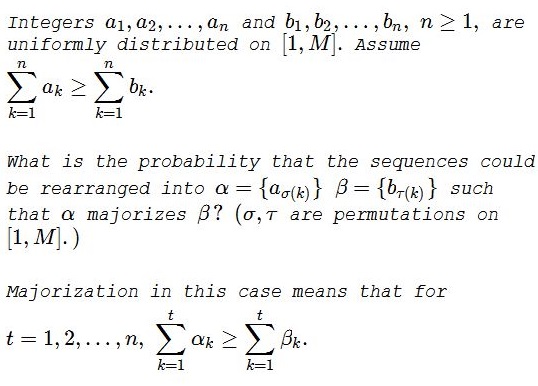Probability of Majorization
Problem

Solution
Rearrange $a's$ in the descending, $b's$ in the ascending order.
Then the partial sums of $\{a_i\}$ lie on a concave curve going through $(0, 0)$ and $\displaystyle \left((n, \sum_i a_i\right)$ and the partial sums of $\{b_i\}$ lie on a convex curve going through $(0, 0)$ and $\displaystyle \left(n, \sum_i b_i\right).$ Thus the former is always above the latter which proves the majorization.
The probability in question appears to be $1.$
Observe that the proof is valid without the assumption that the given sequences consist of integers. The same remains true if the numbers are real.
Acknowledgment
The above solution is by Timon Knigge.
|Contact| |Front page| |Contents| |Probability|
Copyright © 1996-2018 Alexander Bogomolny71536747
